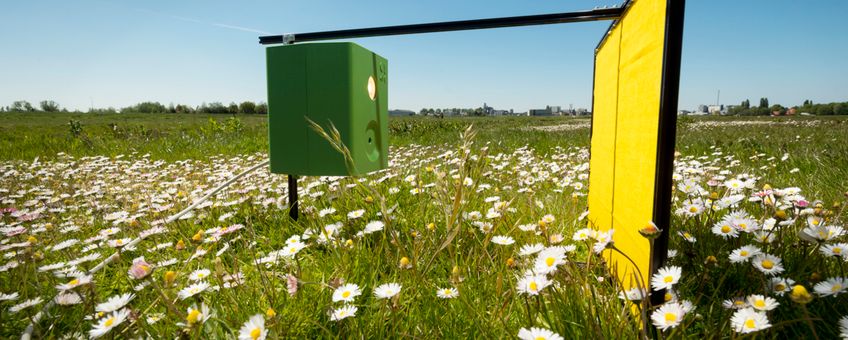
Naturalis launches world's first automated system for insect monitoring
EIS Kenniscentrum Insecten, Naturalis Biodiversity Center, Observation.org, Radboud UniversityAutomatic insect identification promises a big step towards reliable, affordable biodiversity data and may guide policy makers in their efforts to maintain and increase biodiversity. The project was launched in the Netherlands today , where a hundred insect traps will be deployed this summer. International orders for the system are already pouring in.
The recently released IPBES report sketches a bleak picture of global biodiversity loss. Although the report is very detailed on potential loss of various groups of species across the globe, the data on insects is less clear. Available evidence supports a tentative estimate of 10% being threatened, however this evidence is scarce. Monitoring of insects is important but counting insects is a time-consuming job and the number of species is large. Bees and butterflies are popular insects and are counted by volunteers. But what about mosquitoes and beetles? Data on these less popular, but not less important groups of species is largely missing.
Image recognition by use of artificial intelligence has reached a level in which snapshots of insects can be reliably counted and identified. These systems need to be trained however and this can only be done by using a lot of images and expert guidance. In the Netherlands, experts of Naturalis Biodiversity Center, Radboud University Nijmegen and insect knowledge center EIS got together and trained the software, using a huge database of insect images made available by observation.org. The combination of years of experience and knowledge about insect counting and a large database made it uniquely possible in the Netherlands to train software to make reliable observations. Cosmonio, the company behind the AI, is very pleased to see their software perform so well on this important task.

Koos Biesmeijer, scientific director of Naturalis Biodiversity Center, stresses that the system is used to gather biodiversity data, but also to measure the effect of actions taken to protect biodiversity, such as managing drainage water levels, mowing methods, etc. “Although the system will be a great addition to human counters, it will certainly not replace the qualitative measurements taken by enthusiasts” says Biesmeijer. “It is these people that made the system possible in the first place, if it was not for them there would not have been the huge database that was used to train the software.”
In Western Europe, insects are under threat. And that’s not just the pollinators, but also the smaller, less counted species that serve important roles in the food web. The Naturalis center for Biodiversity has a mission to make people aware of this. Their experts speak out on various channels to promote national bee and butterfly counts and on a smaller scale, the center engages with garden centers to encourage the general audience to plant more insect-friendly plants. Naturalis is not alone in their mission. One of the major funders of the project is the WWF. Their focus to increase awareness of the insect crisis that we’re in aligns very well with the project. Among parties interested interested in the system are local governments. The Dutch province of North-Holland has the first cameras placed in early july. “Monitoring insect populations gives valuable insights to make politicians and policy makers aware of the problem” says Adnan Tekin, minister for nature of the provice. And this is much needed to push the agenda and urge policymakers to act. This summer, a hundred camera’s will be deployed throughout the Netherlands. The results will be compared to more traditional means of insect counting. The resulting data will be added to existing time-series data on insect populations and the network of camera traps that Naturalis envisions will ultimately provide a much more complete picture of the state of insect populations.
Text: Naturalis Biodiversity Center
Photos: Taco van der Eb
